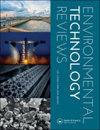Phycoremediation in aquaculture; a win-win paradigm
Q1 Environmental Science
引用次数: 4
Abstract
ABSTRACT The ever-growing aquaculture sector has a great economic and environmental cost as it has been responsible for severe water pollution and ecosystems failure. The presence of high concentrations of different pollution factors is a big challenge for the aquaculture industry to sustain fishery production. The conventional wastewater treatment systems demand urgent efforts to avoid secondary pollution. It is high time to develop green technology for aquaculture wastewater treatment and bioremediation could be the major intervention towards this. Phycoremediation, being an energy efficient technique, is employed as a tertiary treatment strategy for nutrient recovery from aquaculture wastewaters. Instead of being wasted, nutrients can be fed to algae to generate biomass for feed, bio-fuel and other valuable products. This review article gives an outlook to the studies that have explained the unique activity of microalgae, macroalgae and algae-bacteria consortia to scavenge nutrients from the aquaculture wastewater. The review also addresses the factors affecting phycoremediation, advantages of phycoremediation as well as the limitations and disadvantages that hamper this technique from full-scale use. Lastly, suggesting sustainability strategies for phycoremediation application in aquaculture will enable the selection of appropriate algae and help development of simple environment-friendly economical and sustainable aquaculture systems adopting bioremediation and parallel production of algae biomass for various purposes. GRAPHICAL ABSTRACT水产养殖中的藻修复;双赢模式
摘要不断增长的水产养殖业造成了严重的水污染和生态系统破坏,因此付出了巨大的经济和环境代价。高浓度的不同污染因素的存在对水产养殖业维持渔业生产是一个巨大的挑战。传统的废水处理系统迫切需要努力避免二次污染。现在是开发水产养殖废水处理绿色技术的时候了,生物修复可能是实现这一目标的主要干预措施。Phycoremediation作为一种节能技术,被用作水产养殖废水营养回收的三级处理策略。营养物质不会被浪费,而是可以被喂养给藻类,以产生用于饲料、生物燃料和其他有价值的产品的生物质。这篇综述文章对微藻、大型藻类和藻类细菌群落从水产养殖废水中清除营养物质的独特活性的研究进行了展望。该综述还阐述了影响藻介的因素、藻介的优点以及阻碍该技术全面使用的局限性和缺点。最后,提出藻介导在水产养殖中应用的可持续性战略,将有助于选择合适的藻类,并有助于开发简单、环保、经济和可持续的水产养殖系统,该系统采用生物介导和藻类生物量的并行生产,用于各种目的。图形摘要
本文章由计算机程序翻译,如有差异,请以英文原文为准。
求助全文
约1分钟内获得全文
求助全文
来源期刊

Environmental Technology Reviews
Environmental Science-Water Science and Technology
CiteScore
6.90
自引率
0.00%
发文量
8
 求助内容:
求助内容: 应助结果提醒方式:
应助结果提醒方式:


